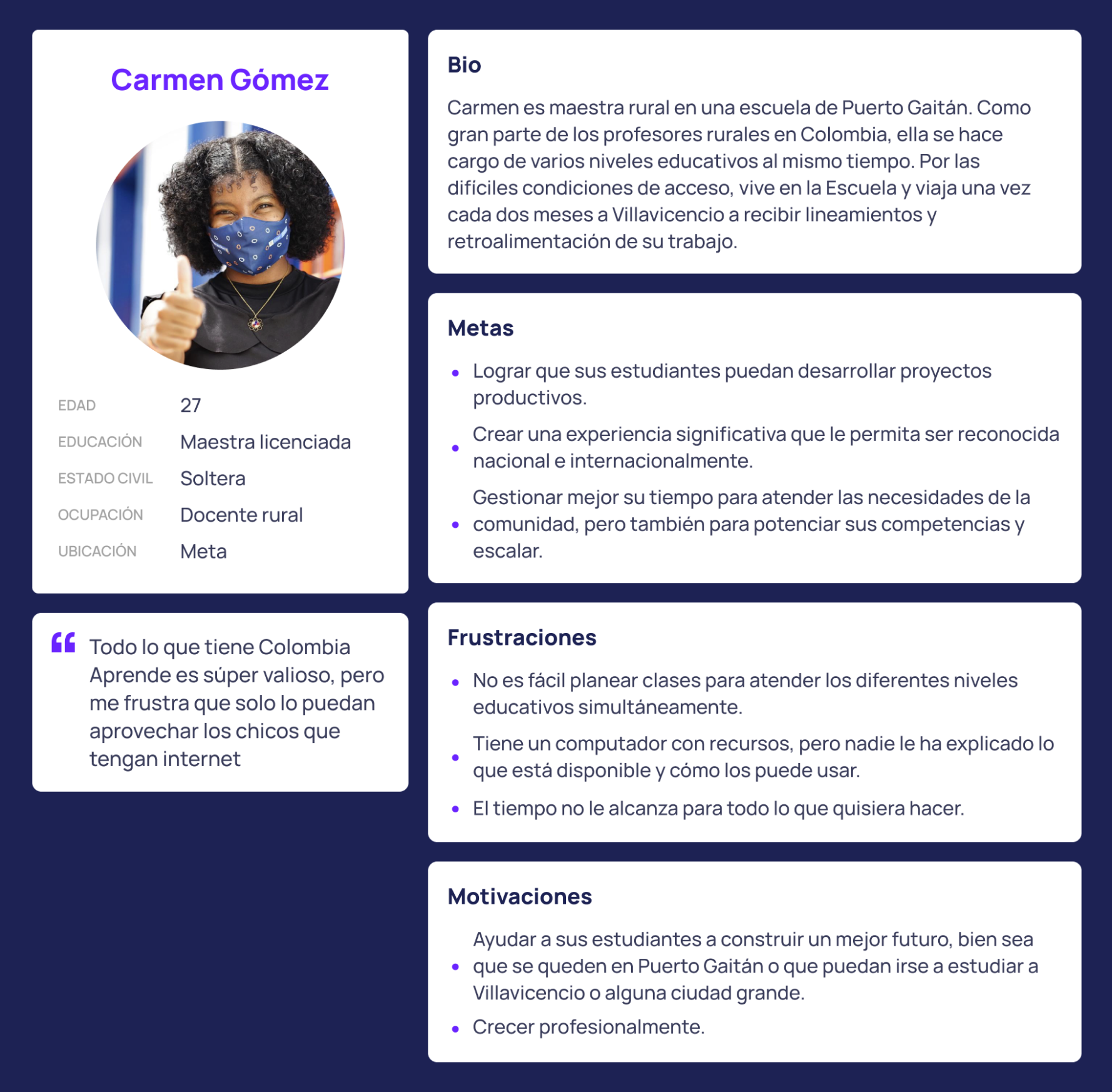Challenge
How to provide rural teachers with educational content resources when they don’t have access to Internet?
Background
Aprender Digital was a spin-off of Colombia Aprende. It was created to assist the educational community with content and guidelines during the lockdown caused by the COVID-19 pandemic.
It was a temporary solution while we finish the evolution of www.colombiaaprende.edu.co. In fact, when we launched the new version of Colombia Aprende in October, Aprender Digital became redundant.
Nonetheless, it was a platform that gained reknown, so the managers of the Ministry gave us the chance to work on a new value proposition. Our only goal was to iterate to create a solution for people without an Internet connection.
Process
In contrast with Colombia Aprende, for this project, we had to work in a short timeline. We only had three months to propose a new value proposition, define the scope of the new product, build our MVP and test it with rural teachers.
Because we have to work with agile development in mind, we chose the Lean UX framework to build a solution that created value fast. Instead of defining requirements meticulously, we’ve made desk research to make our problem statement.

We’ve found that more than 7 million rural people lack access to the internet. Also, 47% of rural schools don’t have any network infrastructure. The gaps between cities and rural populations are so deep that one rural child only gets the 50% of education compare to their counterparts in cities like Bogotá or Medellín.
Problem statement
The lack of access to educational resources is increasing the gap between rich and poor, and it's also damaging the performance of the rural teachers.
Hypothesis
Even without internet, if we find a way to deliver constantly educational resources and guidelines, we could improve rural teacher’s performance and also the quality of the education.
Finding the users
We decided to include the team of the Educational Secretaries in the process. We’ve made two proto-personas: one rural teacher and one ICT leader of the Secretary.
After that, we interviewed 10 teachers and 5 ICT leaders to gather insights and evolve the proto persona to a more deep user persona.

Creating value
To define the MVP, we’ve first stablished our new value proposition. We’ve made the process for both user personas.

Through the workshop, we had an epiphany. First, we had to fasten our management of the content packages so that the Secretaries could make specific requests and find the resources that they need within two or three weeks. On the teachers' side, we had to ensure that the resources were not downloaded individually but packaged in a clear and simple way.

Aprender Digital is, from now on, a microsite with curated packages of content. Educational Secretaries and teachers could download these packages in HTML interfaces. They only have to take this compressed file to rural schools' computers. On our side, we don't have to create these packages one by one. We only need to publish content as we usually do, and the CMS takes care of the rest. As simple as that.
Prototyping and testing
We build two interfaces. One for the website, one for the offline packages. The first one was an iteration of the previous site. The second was created applying the Material Design guidelines.
Lessons learned
We’ve learned a lot about how to build and iterate fast enough to provide value early. But I need to be honest.
The first version of the site was a little rushed. We could have early access or a beta period to get feedback and improve fast.
The development and design process was good enough, but we forgot about the content design process.
As a result, we launched a bare-bones site. After two weeks, the situation is radically different, but we’ve should wait a little longer to provide a better experience.
